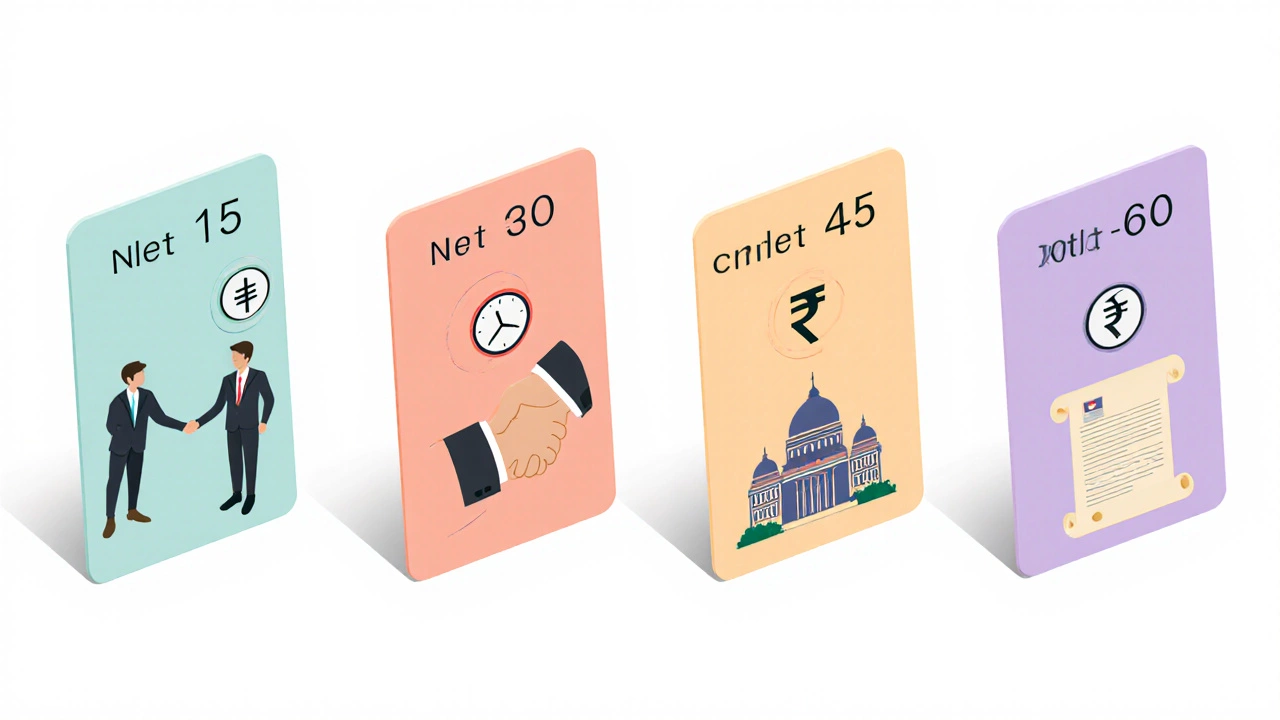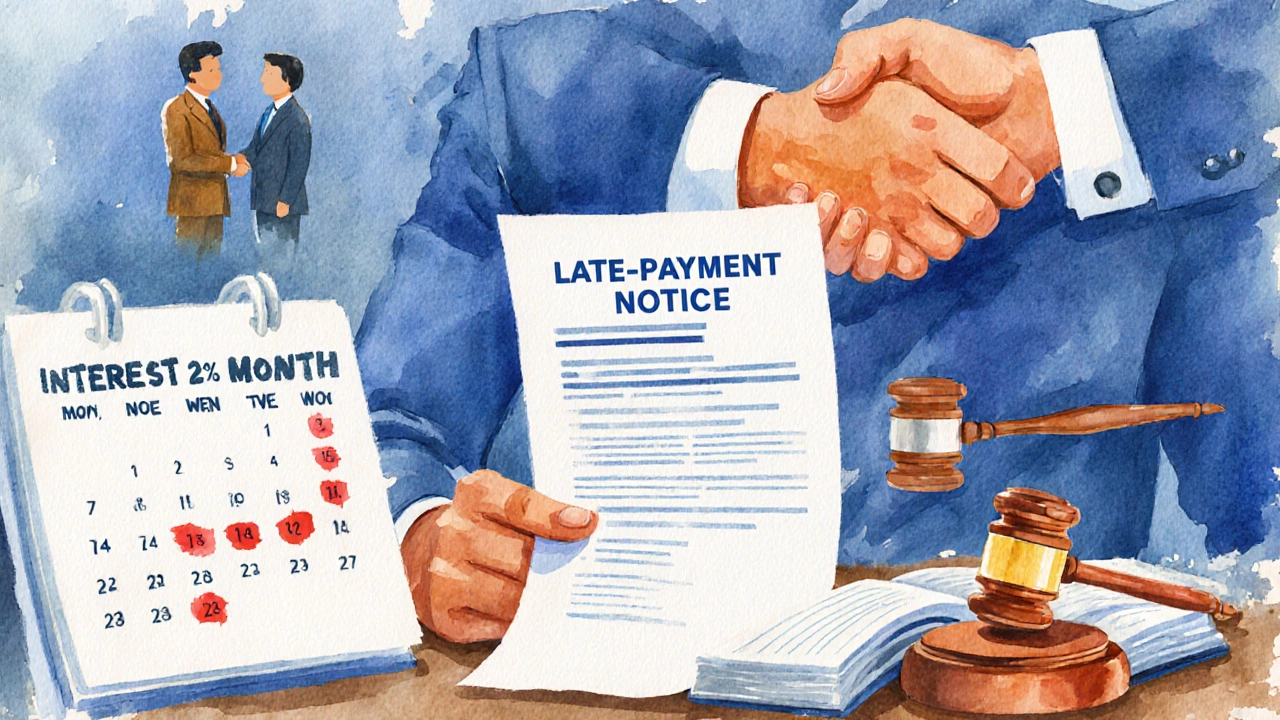Invoice Payment Term Calculator
Calculate Your Optimal Payment Term
Determine the best payment window for your business based on cash flow metrics and GST compliance requirements. This tool calculates your optimal payment term using your business-specific financial data.
Optimal Payment Term
Based on your business metrics
Calculated Value: 0 days
This calculation suggests a payment term of days. For GST compliance and cash flow stability, we recommend using Net 30 as your default term.
Why This Matters for Indian Businesses
The optimal payment term you calculate helps you:
- Balance cash flow - Align with your GST filing periods and avoid mismatches between reported sales and actual cash received.
- Improve receivables turnover - Higher turnover ratios make you more attractive to lenders and investors.
- Reduce payment delays - Clear terms reduce late payments by 15-20% when combined with automated reminders.
When you send an invoice, the clock starts ticking on cash flow, tax filing, and the health of your business. Deciding how many days to give a client before the payment is due can feel like a guess‑work, but the right timeframe balances customer goodwill with your own financial stability. Below we break down the factors that shape a sensible payment window, the legal backdrop in India, and practical steps to protect yourself from late‑payment fallout.
Why the Right invoice payment terms Matter
Setting a clear due date does more than tell a client when to pay. It directly influences:
- Cash flow - Shorter terms bring money in faster, letting you cover salaries, rent, and supplier invoices without resorting to costly credit.
- GST compliance - Under the Indian GST regime, you must report tax on sales in the period you file GSTR‑1. Delayed payments can create mismatches between sales declared and cash actually received.
- Accounts receivable turnover - A key metric for lenders and investors; the faster you collect, the healthier the turnover ratio appears.
Getting these right keeps your balance sheet tidy and avoids costly penalties when GST returns don’t align with banking statements.
Legal Framework Governing Payment Deadlines in India
Two main statutes shape how long you can or should wait:
- The Goods and Services Tax (GST) Act - While the Act does not prescribe a strict payment window, it requires that the tax component of an invoice be accounted for in the period of supply. If a client delays payment beyond the filing period, you may need to carry forward the tax liability as a short‑term liability.
- Payment of Commercial Bills Act, 1935 - Provides a default 30‑day period for bills of exchange unless otherwise stipulated in the contract.
In practice, most Indian businesses embed a specific "Net X" clause in the contract to avoid ambiguity.
Commonly Used Payment Terms and Their Implications
| Term | Typical Use‑Case | Pros | Cons |
|---|---|---|---|
| Net 15 | Small B2C services, freelancers | Quick cash, improves turnover | May strain customer relations if they expect longer credit |
| Net 30 | Most B2B contracts, medium‑size suppliers | Industry standard, balances cash flow and client comfort | Still exposes you to 30‑day cash gap |
| Net 45 | Large corporate buyers, government contracts | Accommodates longer internal approval cycles | Higher interest risk, may affect GST filing |
| Net 60 | Strategic partnerships, high‑value long‑term projects | Shows flexibility, can win big contracts | Significant cash‑flow impact, may require financing |

Factors to Consider When Choosing a Payment Window
One size does not fit all. Evaluate each client against the following checklist:
- Client’s credit history: Run a basic credit check or request trade references. A clean record can justify longer terms.
- Industry norms: Construction and government projects often operate on Net 45‑60, while IT services lean toward Net 30.
- Invoice amount: Higher values increase risk; consider tightening terms for large bills.
- Relationship length: New clients warrant stricter terms until trust is built.
- Cash conversion cycle of your own business: If you need cash within 20 days to pay suppliers, Net 30 may already be too long.
- GST filing schedule: Align due dates so that the tax collected matches the reporting period (usually monthly).
Calculating an Optimal Payment Term Using the Cash Conversion Cycle
Here’s a quick formula many Indian SMEs use:
Optimal Term (days) = Cash Conversion Cycle - Days Payable Outstanding + Safety Buffer
Where:
- Cash Conversion Cycle (CCC) = Inventory Days + Receivables Days - Payables Days.
- Days Payable Outstanding (DPO) reflects how long you can delay paying suppliers without penalties.
- Safety Buffer is typically 5‑10 days to absorb unexpected delays.
Example: An apparel reseller has CCC = 55 days, DPO = 30 days. Adding a 7‑day buffer gives an optimal receivable term of 32 days - essentially Net 30.

Dealing With Late Payments: Penalties, Interest, and Recovery
Even the best‑crafted terms can be ignored. Build a safety net:
- Include a late‑payment clause: e.g., “Interest at 2% per month will be charged on overdue amounts.” This is enforceable under the Indian Contract Act.
- Send automated reminders: 5 days before due, on due date, and then every 7 days thereafter.
- Issue a legal notice: After 30 days past due, a formal notice often prompts payment without court action.
- Consider factoring or invoice financing: If late payments are frequent, selling receivables can keep cash flowing.
- Adjust future terms: Reduce the credit period for repeat offenders or require upfront payment.
Most small businesses find that a clear interest rate plus consistent follow‑up reduces late‑payment rates by 15‑20%.
Practical Checklist Before Sending an Invoice
- Verify client’s GSTIN and include it on the invoice.
- State the exact payment term (e.g., “Net 30 days from invoice date”).
- Show the GST amount separately and mention the applicable rate.
- Include your banking details (IFSC, Account No.) for faster transfers.
- Attach a brief “Late Payment” note with interest rate and reminder schedule.
- Set up an automated reminder system linked to your accounting software.
- Record the invoice in your accounts receivable ledger immediately.
Mini‑FAQ
What is the legal default payment period in India?
If no term is specified, the Payment of Commercial Bills Act defaults to 30 days, but most contracts explicitly state a "Net X" period to avoid ambiguity.
Can I charge interest on late invoices?
Yes. Under the Indian Contract Act, you may include a clause charging reasonable interest (commonly 2% per month) on overdue amounts.
How do GST filing dates affect my payment terms?
GST on a sale must be reported in the tax period when the supply occurs. If you allow a client to pay after the filing deadline, you’ll have to account for the tax as a short‑term liability until the cash arrives.
Is Net 45 ever advisable for small businesses?
Only if your own cash conversion cycle can absorb a 45‑day gap or if you’re dealing with a strategic client whose order volume justifies the risk.
What tools can help automate reminders?
Most Indian accounting platforms-Tally, Zoho Books, and QuickBooks India-offer built‑in reminder schedules that trigger emails on preset dates.
By aligning the payment window with your cash needs, industry norms, and GST filing cycles, you protect both your bottom line and your client relationships. Remember: a clear term, a polite reminder, and a fair interest clause are the three pillars of healthy receivables.

